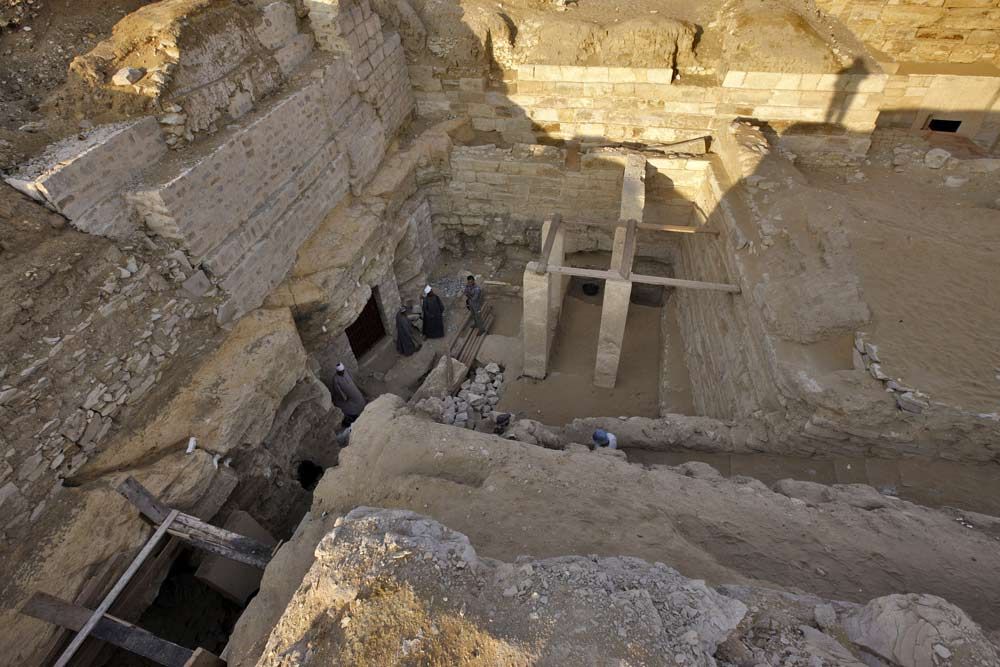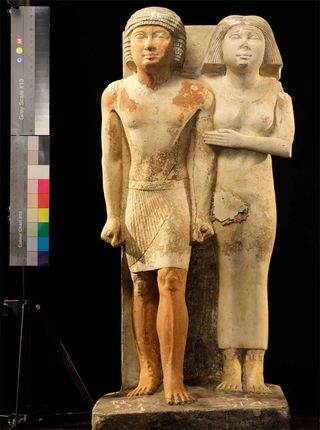Tomb of Ancient Egyptian Princess Discovered in Unusual Spot

The tomb of an ancient Egyptian princess has been discovered south of Cairo hidden in bedrock and surrounded by a court of tombs belonging to four high officials.
Dating to 2500 B.C., the structure was built in the second half of the Fifth Dynasty, though archaeologists are puzzled as to why this princess was buried in Abusir South among tombs of non-royal officials. Most members of the Fifth Dynasty's royal family were buried 1.2 miles (2 kilometers) to the north, in the central part of Abusir or farther south in Saqqara.
(Saqqara holds a vast burial ground for the ancient capital Memphis and is home to the famous Step Pyramid of Djoser.)
The researchers aren't sure whether the remains of the princess are inside tomb, as the investigation is still in progress, Miroslav Bárta, director of the mission, told LiveScience. Even so, they also found several fragments of a false-door bearing the titles and the name of Sheretnebty, the king's daughter. [Image Gallery: Egypt's Great Terrace of God]
"By this unique discovery we open a completely new chapter in the history of Abusir and Saqqara necropolis," said Bárta, who heads the Czech mission to Egypt from the Czech Institute of Egyptology of the Charles University in Prague.
Bárta and colleagues think the ancient builders used a naturally existing step in the bedrock to create the princess' court, which extends down 13 feet (4 meters) and is surrounded by mastaba tombs above it. A mastaba is a type of ancient Egyptian tomb that forms a flat-roofed rectangular structure.

A limestone staircase descends from north to south along the burial court; four limestone pillars that once supported roofing blocks hold carved hieroglyphic inscriptions reading: "King's daughter of his body, his beloved, revered in front of the Great God, Sheretnebty."
Sign up for the Live Science daily newsletter now
Get the world’s most fascinating discoveries delivered straight to your inbox.
The four surrounding tombs were cut into the rock of the south wall of the court and of a corridor that runs east from the southeast corner of the court. The two tombs in the south wall, dating to the time of Djedkare Isesi, the seventh ruler of the Fifth Dynasty, belong to Shepespuptah, the chief of justice of the Great House, and Duaptah, an inspector of the palace attendants. The other pair is situated along the corridor, with one belonging to an official named Ity.
"We are very fortunate to have this new window through which we can go back in time and to follow and document step by step life and death of several historically important individuals of the great pyramid age era," Bárta said in a statement.
Follow LiveScience on Twitter @livescience. We're also on Facebook & Google+.
Jeanna Bryner is managing editor of Scientific American. Previously she was editor in chief of Live Science and, prior to that, an editor at Scholastic's Science World magazine. Bryner has an English degree from Salisbury University, a master's degree in biogeochemistry and environmental sciences from the University of Maryland and a graduate science journalism degree from New York University. She has worked as a biologist in Florida, where she monitored wetlands and did field surveys for endangered species, including the gorgeous Florida Scrub Jay. She also received an ocean sciences journalism fellowship from the Woods Hole Oceanographic Institution. She is a firm believer that science is for everyone and that just about everything can be viewed through the lens of science.












